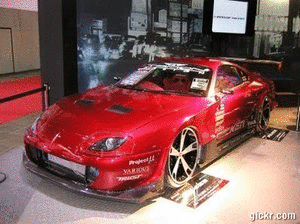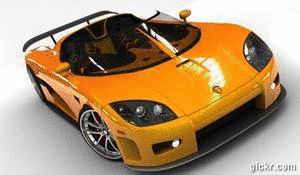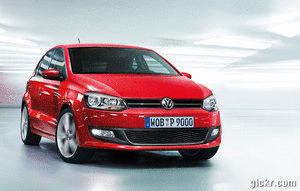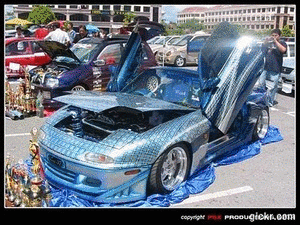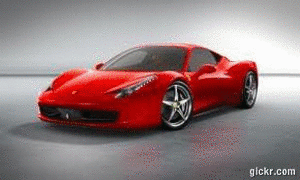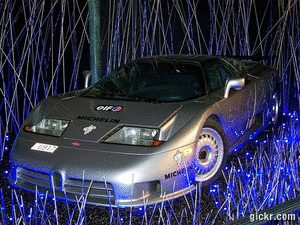|
|
|---|
How Car Alarms Work
Car alarms are an electronic device which is designed to prevent burglary and warn the owner if a theft attempt is being made. Usually a car alarm will output a high pitched sound when the system is triggered by vibration, close or open of trigger switches, sensing of small and fast change in battery voltage. Today's car alarm also monitors sensors like infrared, microwave, ultrasound or tilting of the vehicle in case of unauthorized towing. Some cars have alarm systems which send out SOS signal in case of breakdown or theft. Alarm systems are also incorporated with navigation system to increase the security of the car. If the car is stolen, it can be traced by an embedded navigation system. This functionality can also be used to locate lost cars in large parking lots by giving out a chirping sound.
Many times a car alarm can give out a false alarm when it feels vibrations of thunder or a passing truck. Sensors need to be adjusted properly otherwise it can trigger the device even when a person accidentally touches the automobile. There is an increase in the crimes related to theft of vehicles. For people who want security for their cars and want to avoid false alarms you can have a police tracking system installed, many newer cars have this tracking capability built in to the operation of the help/navigation system, like On Star. This system comes with an additional cost which is to be paid on a regular basis. Most alarm systems utilize a remote controller (key fob); this way a user can disable the alarm from a distance. The remote control feature is very convenient if the system is triggered by a false alarm. Key fob's can integrate a variety of functions, controllers that have the LCD option which can project the image of the part of the vehicle that is under threat by a thief is one example.
Source by: http://www.2carpros.com/how_does_it_work/car_alarm.htm
Lamborghini LP570-4 Superleggera

The new Lamborghini Gallardo LP570-4 was officially revealed at the Geneva Motor Show and as always, the newer model is now faster and much lighter, in fact at 70kg’s lighter than its predecessor, the LP570-4 Superleggera is Lamborghini’s lightest road-going car yet.
The new car is powered by a 5.2-liter V10 engine with an aluminium crankcase and dry sump lubrication. Falling a little short of our prediction (570hp), the new ‘leggera makes 562hp at 8,000rpm effectively giving the car a 108hp per liter specific power output. Max torque stands at 540Nm at 6,500rpm.
Putting down all that power will be Lamborghini’s 6-speed e-gear system which is offered as standard and for real driving enthusiast, Lamborghini will offer manual transmission as a no-cost option. Sprint time is exactly as predicted, 0-100km/h in 3.4 seconds and 0-200km/h in 10.2 seconds. Top speed is predictively rated at 325km/h. It should be noted that fuel consumption and CO2 emissions have been cut by 20.5% compared to the previous ‘leggera.
Helping to keep the weight down, Lamborghini is using an aluminium bodyshell while parts like the exterior mirror casings, the sills, rear spoiler and diffuser are all made of carbon fiber. Also contributing to the weight loss program are windscreens and side windows constructed out of polycarbonate.

Aerodynamics have been enhanced with the use of redesigned bumpers and body panels, the front bumper has been remodeled for increased air flow and downforce. Also helping the handling department, Lamborghini is utilising a permanent AWD system with a 45% limited slip differential on the rear. Grip is provided by 235/35 ZR19 Pirelli P Zero tyres at the front and 295/30 ZR19s at the rear.
There are also dashes of carbon-fiber inside the car to keep weight down. The lightweight material adorns items such as the center tunnel cover, the door panels, and the gearlever surround. Alcantara has also been generously used around the cabin and the seats.
Surprisingly, this extreme Lamborghini doesn’t just offer mad performance but some luxury gadgets as well, including air-conditioning, a rear view camera, electric windows, and a satellite navigation system. Read on below for more information.
Lamborghini Gallardo LP 570-4 Superleggera
“Even more dynamic, lighter, more powerful and stunning – the Lamborghini Gallardo LP 570-4 Superleggera is the new top model in the Gallardo line-up. Its evocative “superlight” badge refers to a driving machine of true sporting character and describes a high-performance and lean automotive athlete. The Superleggera makes its entrance to continue the success of its predecessor, launched in 2007, of which Lamborghini produced and sold no less than 618 in just one year.
Compared with the already lean Gallardo LP 560-4, the weight of the Gallardo Superleggera has been trimmed by 70 kilograms (154 lb). The super sportscar from Sant’Agata Bolognese boasts a dry weight of no more than 1340 kilograms (2954 lb) – the lightest road-going model in Lamborghini’s range, and a new arrival in one of the most exclusive market niche segments.
One key factor is the exterior and interior components made from carbon-fiber. Carbon-fiber is ideal for the manufacture of sportscars as its use allows for weight reduction and improved mechanical features. The car’s performance is thus enhanced thanks to a better weight-to-power ratio and reduced total mass, which means that CO2 emissions are also lower. Lamborghini has been at the forefront in this material’s application for many years, and now the brand is extending its leadership even further.
The V10 power unit with 5.2 liters (317,6 cu in) of displacement generates 419 kW (570 CV*) in the Gallardo Superleggera. This puts the weight-to-power ratio of the new top model at only 2.35 kilograms (5.18 lb) per CV and guarantees breathtaking performance. The Gallardo LP 570-4 Superleggera handles the dash from zero to 100 km/h (0-62 mph) in 3.4 seconds and flies past the 200 km/h (124 mph) mark only 10.2 seconds later, ultimately reaching 325 km/h (202 mph). The engine with “Iniezione Diretta Stratificata” gasoline direct injection also boasts an impressive degree of efficiency. Its fuel consumption and CO2 emissions have been reduced by 20,5 percent compared to the previous model.
The Gallardo Superleggera is an uncompromising driving machine. Its running gear, with its mighty braking system, has a dedicated and exceptionally precise set-up, while its 19-inch wheels, Pirelli P Zero Corsa, clad in Pirelli sports rubber, are extremely light. The Lamborghini Gallardo LP 570-4 Superleggera brings a whole new meaning to the term “super sportscar”.
Design and aerodynamics:
The beauty of power
The elegance of every Lamborghini rests on both its extreme power and precise functionality. The Gallardo LP 570-4 Superleggera’s bodyshell is sculptured and completely free from stylistic additions. Dimensions define the contours of a dynamic wedge – 4.39 meters (172,7 in) long, 1.90 meters (74,8 in) wide, but only 1.17 meters (45,9 in) high.
Exterior modifications are all directed at increasing aerodynamic effects. Working closely with wind tunnel experts, the designers from Lamborghini’s Centro Stile remodeled the front bumper – three-dimensional, deeply recessed elements form trapezoidal frames for the large air intakes. Together with the V-shaped, sharply defined nose and the LED daytime running lights, the black elements give the front end a razor-sharp look, reminiscent of Lamborghini’s top model. The new design increases the supply of cooling air and improves the downforce on the front axle.
The modifications to the fully-covered underbody, which include new sill elements and a redesigned diffuser incorporating four large tailpipes, help to achieve better aerodynamic results. The Gallardo Superleggera sports a small rear spoiler as standard. A big rear spoiler is available as an option.
The bodyshell:
Intelligent lightweight engineering
The model on which the Gallardo LP 570-4 Superleggera is based, the Gallardo LP 560-4, is already a prime example of Lamborghini’s lightweight engineering philosophy, with its dry weight of 1410 kilograms (3108.5 lb). Its bodyshell is made from aluminum, with moulded node elements and extruded parts forming an extremely stiff framework into which the aluminum panels are integrated. The spaceframe structure is impact-resistant and forms the basis for the super sportscar’s precise handling.
Against this background, the task of reducing the weight by a further 70 kilograms (154 lb) presented a huge challenge to Lamborghini engineers – the target figure, a weight-to-power ratio of 2.35 kilograms (5.18 lb) per CV, sets a new best among the competition. Lamborghini engineers handled the task as they usually do – with hi-tech competence and aesthetic flair.
The rear windshield and side windows are made from robust and resistant polycarbonate. The engine cover also includes a polycarbonate window, beneath which the V10 engine is displayed like a technical work of art. The long cover section runs from the roof to the rear of the vehicle and is made from carbon-fiber. Engineers also selected carbon-fiber for the rear spoiler, sills, diffuser, parts of the underbody paneling and the fine exterior mirror casings.
With its minimal weight and extremely high rigidity, carbon-fiber is the ideal material for a super sportscar. As far back as the 1980s, Lamborghini was already gathering experience in this field with the Countach. Today, some parts of the Murciélago’s structure are made from carbon-fiber. In order to secure this leading position even further, the brand from Sant’Agata Bolognese established a center of excellence for carbon-fiber materials, where specialists are developing components, working with efficient manufacturing technologies.
Lamborghini’s carbon-fiber strategy is further proven by its foundation of the “Automobili Lamborghini Advanced Composite Structures Laboratory” (ACSL) at the University of Washington in Seattle, USA. Lamborghini provides support to the facility and its long-term, co-operative research work in the fields of aeronautics and astronautics, together with the composite materials’ application within the automotive sector. Alongside the University of Washington, aircraft company Boeing is also among Lamborghini’s partners.
The aircraft manufacturer commands enormous expertise in the field of composite materials. With the new Type 787 Dreamliner, Boeing has developed the world’s first commercial aircraft built entirely from carbon-fibre. Thanks to its superior characteristics, it consumes around 20 percent less fuel than a conventional aeroplane.
The interior and the use of carbon-fiber
Altogether, carbon-fiber components make up 40 (88 lb) of the 70 kilograms (154 lb) saved on the Gallardo Superleggera. In the interior, too, engineers aimed to reduce weight as much as possible. The center tunnel cover, the door panels and the surround of the e-gear automated manual transmission lever are made from carbon-fiber. The high-end material is also used for the sports seats’ shells. They make a significant contribution to the overall weight reduction.
Just like the rest of the cockpit, the sports seats are clad in lightweight Alcantara instead of leather. At Lamborghini, weight reduction is in no way synonymous with sacrifice – the Gallardo LP 570-4 Superleggera is still equipped with air conditioning and electric powered windows as standard.
Lamborghini has built on this strength – the interior is crafted with passionate attention to the tiniest detail; high quality materials indulge both visually and sensually.

The interior, including roof and mats, retains the Lamborghini Gallardo’s black finish. As a contrasting color for elements such as seat trims and stitching, customers can choose among green, yellow, orange and two shades of gray. They match exterior paint finishes in Verde Ithaca, Giallo Midas, Arancio Borealis, Grigio Telesto, Nero Noctis and Bianco Monocerus.
Power & transmission:
The engine
10.2 seconds from zero to 200 km/h
In the Gallardo LP 570-4 Superleggera, LP stands for “longitudinale posteriore” and refers to the orientation of the V10 engine – which is mounted longitudinally behind the driver, just like every Lamborghini engine. The number 570 refers to the maximum power output in CV, which equates to 419 kW and is available at 8,000 rpm. Equally impressive is the pulling power – the torque curve peaks at 540 Nm (398,3 ft lbs) at 6,500 rpm. The increase of 7 kW (10 CV) is the result of the new dedicated engine management strategy.
The V10 has a displacement of 5204 cm3 and achieves a specific output of 80.5 kW (109.6 CV) per liter. Special features on this long-stroke engine with an aluminum crankcase include dry sump lubrication and a cylinder angle of 90 degrees. Both solutions lower the center of gravity, thus improving the handling dynamics. To ensure an ideal combustion chamber fill, the engine has an adjustable intake manifold and continuous control of the chain-driven camshafts.
The crankshaft is conceived as a dual-plane crank – the connecting rods of opposing pistons share one bearing. This configuration delivers alternating ignition intervals of 54 and 90 degrees; a unique sequence that is the reason for the compelling, racing car-like sound of the V10. As the revs rise, resounding bass notes are overlaid with razor sharp harmonics.
The powerful V10, combined with the model’s weight reduction, gives the Gallardo Superleggera LP 570-4 breathtaking performance. The car accelerates zero to 100 km/h (0-62 mph) in just 3,4 seconds, 0 to 200 km/h (0-124 mph) in 10,2 seconds – then continues relentlessly to its top speed of 325 km/h (202 mph).
The Gallardo Superleggera is also considerably more efficient – compared with its predecessor, its fuel consumption in the EU driving cycle is reduced by 3,5 liters per 100 kilometer (0,9 gal), or 20,5 percent, to 13,5 liters/100 km (16 mpg). This improvement is partly due to the “Iniezione Diretta Stratificata” gasoline direct injection, which injects fuel into the combustion chambers at pressures of up to 100 bar. The tumbling mix cools the combustion chambers, which enables a very high compression ratio of 12.5:1 which, in turn, increases efficiency.
Traction without compromise
The Gallardo LP 570-4 Superleggera comes with the e-gear transmission operated via steering wheel paddles, as standard. The automated system with electronic management shifts through its six gears extremely smoothly and far more quickly than could be achieved by human reflexes.
The e-gear control unit has three operating modes, two of which available in automatic. The “Thrust mode” delivers maximum off-the-line performance and is programmed to manage starting revs of around 5000 rpm with minimal wheel slip.
Every single kilometer in the new Superleggera is utterly thrilling – not least because of the relentless traction in practically every situation. This is largely attributable to the four driven wheels, as indicated by the number 4 in the model name. The permanent all-wheel drive integrates a central viscous coupling and a 45 percent limited slip differential on the rear axle. In normal circumstances, the power delivered by the V10 is channeled with a ratio of 30:70 to the front and rear axles. The weight distribution of the superlight Gallardo is 43/57 percent front/rear.
In 1993, the Diablo VT was the first Italian super sportscar with an all-wheel drive set-up, and Lamborghini has been steadily consolidating its leadership ever since. In fact, thanks to the car’s superior traction, Lamborghini drivers can accelerate earlier out of a bend than drivers of rear-wheel drive cars.
The running gear:
Even firmer, even more precise
The new Gallardo Superleggera is a highly-concentrated driving machine – it thrills with breathtaking cornering speeds and fast, immediate feedback. Its handling is always precise, stable and predictable. The running gear layout is derived directly from Lamborghini’s motorsport experience. The suspension is aluminum double wishbones. The precise rack and pinion steering keeps the driver very closely connected with the road. The shock absorbers are extremely firm, and the anti-roll bars and suspension mounts have been further reinforced: these features enable the running gear to reach its full dynamic potential. No other model in the Gallardo range is as close to a race car as this one. The development of the Superleggera was heavily influenced by experiences gained from the world’s fastest single-brand race series, the Lamborghini Blancpain Super Trofeo.
Another special feature of the Gallardo Superleggera is the wheels. The 19-inch units are aluminum forged and are therefore extremely lightweight – saving 13 kilograms (28.6 lb). The wheel bolts are made from titanium and are also incredibly light and rigid. The tires are 235/35 ZR19 at the front and 295/30 ZR19 at the rear and come from the Pirelli P Zero Corsa series. Developed specifically for the new top model in the Gallardo range, they are closely related to pure race rubber.
Behind the huge wheels are brakes that serve to deliver uncompromising stopping power and are managed by the standard-fit ESP stability control system. The front wheels are served by aluminum eight-piston calipers, with four-piston units at the rear. The ventilated brake discs have a diameter of 365 and 356 millimeters (ø 14.37 x 1.34 in and 14.02 x 1.26 in) respectively. As an optional extra, Lamborghini can fit extremely fade-resistant and lightweight discs made from carbon-fiber ceramic with six pistons at the front. The front ceramic discs have a diameter of 380 millimeters (ø 15 x 1.5 in).

Equipment:
Hi-tech for road and track
Alongside its specialized carbon-fiber lightweight components, the Lamborghini Gallardo LP 570-4 Superleggera is delivered ex-works with an array of other high-end features. Highlights include the e-gear transmission – a manual gearbox is also available at no additional cost – the dedicated set-up, the Pirelli sports tires and the sports seats. Alcantara upholstery and a hand-stitched steering wheel also set the interior ambiance.
The range of special equipment is particularly sporty. It includes carbon-fiber ceramic brake discs, four-point seat belts, fire extinguisher and a steel roll cage. Visual impact can be further increased by a rear spoiler and the engine bay for the engine compartment – both from carbon-fiber – as well as colored brake calipers.
For the interior, Lamborghini offers special floor mats and leather steering wheels, a storage package and an alarm system. An additional carbon-fiber package includes center console and instrument panel trim, the parking brake handle, parts of the steering wheel and the door handles. A LED light package illuminates the engine compartment, the interior, and the entry area.
Additional features of special equipment increase comfort, such as the multimedia navigation system, the lifting system which raises the front of the car to enable driving over obstacles, a remote control for opening garage doors and a rear view camera mounted beneath the rear spoiler. Customers who want to personalize their Gallardo LP 570-4 Superleggera, can use Lamborghini’s wide-ranging options of the “Ad Personam” individualization program.

Technical data EN & USA:
Specs
Frame: Structural aluminium spaceframe, based on aluminium extruded parts welded to aluminium cast joint elements
Body: Aluminium with thermoplastic ″hang on″ parts and carbon-fiber elements
Rear Spoiler: Fixed, in carbon fiber
Engine cover: In carbon fiber
Suspension: Aluminium double wishbones front and rear suspension system, front and rear anti-roll bar
Airbags: Front Dual Stage driver and passenger airbags, doors with side impact protection; on optional ‘comfort’ seats only: head/thorax airbag
ESP: Full ESP System with ABS, ASR and ABD
Tyres and wheels: Pirelli P Zero Corsa
235/35 ZR19 front – 295/30 ZR19 rear
Wheels (front-rear) – Aluminium alloy, 8.5” x ø 19”- 11” x ø 19”
Steering – Power- assisted rack and pinion
Kerb-to-kerb turning circle – 11,5 m – (37,7 ft)
Brakes – Steel brakes
Ventilated discs (front-rear)
ø 365 x 34 mm front – ø 356 x 32 mm rear
US – ø 14,37 x 1,34 in – ø 14,02 x 1,26 in
Power vacuum, aluminium alloy callipers :
8- cylinder front callipers and 4-cylinder rear callipers
CCB brakes
Ventilated discs (front-rear)
ø 380 x 38 mm front – ø 356 x 32 mm rear
US- ø 15 x 1.5 in – ø 14 x 1.26 in
Power vacuum, aluminum alloy callipers :
6-cylinder front callipers and 4-cylinder rear calipers
Engine Type
10 cylinders V90°, DOHC 40 valves, direct injection (Iniezione Diretta Stratificata)
Displacement – 5204 cc (317,6 cu in)
Compression ratio – 12,5 : 1
Bore/stroke – ø 84,5mm x 92,8mm – (ø 3,33 in x 3,65 in)
Air intake system – Variable geometry
Maximum power – 419 kW (570 CV*) at 8000 rpm
Maximum torque – 540 Nm at 6500 rpm – (398,3 ft lbs)
Engine management system – Bosch MED 9
Cooling system – Engine and Gearbox oil radiators
Cooling system water – Two water radiators
Emission control system – Catalytic converters with lambda sensors
Lubrication system – Dry sump
Drivetrain
Type of trasmission – Permanent 4-wheel drive with viscous traction system
Gearbox – 6 Speed + reverse, an optional, robotized sequential e-gear system with actuation by paddles on steering column
Clutch – Double plate ø 215 mm (ø 8,46 in)
Rear differential – 45% limited slip
Front differential – Limited slip by ABD function
Performance
Top speed – 325 km/h (202 mph)
Acceleration (0-100 km/h [0-62 mph]) – 3,4 sec.
Acceleration (0-200 km/h[0-124 mph]) – 10,2 sec.
Dimensions
Wheelbase – 2560 mm (100,8 in)
Overall length – 4386 mm (172,7 in)
Overall width – 1900 mm (74,8 in)
Overall height – 1165 mm (45,9 in)
Dry weight – 1340kg (2954 lb)
Weight distribution (front-rear) – 43% – 57%
Capacities
Engine oil – 10 litres (2,6 US gal)
Fuel tank – 90 litres (23,8 US gal)
Engine coolant – 20 litres (5,3 US gal)
EU Consumption with E-Gear**
Urban – 20,4 L/100 km
Extra urban – 9,4 L/100 km
Combined – 13,5 L/100 km
Emission – Euro 5 *** – LEV2
CO2 – 319 gr/km
EU Consumption with manual transmission**
Urban – 22,2 L/100 km
Extra urban – 10 L/100 km
Combined – 14,4 L/100 km
Emission – Euro 5*** – LEV 2
CO2 – 344 gr/km
USA Consumption with E-Gear**
City – 14 mpg
Highway – 20 mpg
Combined – 16 mpg
USA Consumption with manual transmission**
City – 12 mpg
Highway – 20 mpg
Combined – 15 mpg
*The horse power (hp) can be calculated as follows: 1 kW = 1.34 hp
** In accordance with Dir. EC/1999/100
*** MY 2011
Below are the remaining shoots of the Lamborghini LP570-4 Superleggera
Source by: http://www.zerotohundred.com/2010/auto-news/lamborghini-lp570-4-superleggera-more-details-and-images/#more-11223
Tiered fuel subsidy system scrapped!
There were very strong rumors and unnamed sources before this in the papers but now it’s official – the tiered fuel subsidy plan has been scrapped! Domestic Trade, Cooperative and Consumerism Minister Datuk Seri Ismail Sabri Yaakob made the announcement today and also said that there would be no increase in fuel prices for now. I think that we’re going to see is the fuel price being raised slowly and slowly to let us slowly get used to unsubsidized fuel prices.
The highest fuel price we’ve had to endure so far has been RM2.70 per liter for RON97 fuel and RM3.15 per liter for Shell V-Power. This was between the 5th of June 2008 to the 23rd of August 2008. However, there was also a RM625 fixed fuel subsidy issued through Pos Malaysia during that period. You could claim the money when you renewed your road tax. Petrol prices remained high throughout most of the second half of 2008 but was slowly reduced during that period until it settled down to the current prices of under RM2 per liter in December 2008.
Source by: http://paultan.org/2010/03/04/its-official-tiered-fuel-subsidy-system-scrapped/
Mass Air Flow Sensor
The mass air flow sensor (MAF) is used to monitor the amount of air going into the engine while running. Mass air flow sensors work in conjunction with the oxygen sensor and the engine control system to maximize performance and economy. A vehicles mass air flow sensor delivers a signal to the PCM (engine control module) telling the amount of air coming in, this is compared with oxygen levels in the exhaust to determine the efficiency of the engine. It is usually difficult to detect when a mass air flow sensor fails, the "check engine light" or engine symbol will probably not be illuminated. Your car, truck or SUV may have a poor idle quality, stall, low power or all three. Your PCM may have no trouble codes because the PCM cannot detect a problem since the sensor is working but is out of range.
Mass Air Flow Sensor
What has occurred with most MAF failures is the sensing element or "hot wire" that is used to give electronic feedback to the PCM for processing has become contaminated by air particulates. The mass air flow sensor is reporting to the PCM that less air is running through the engine than actually is. The PCM will then lean the fuel mixture down to the point that it will cause performance issues. There is not enough variance in the system to trigger a MIL "Check Engine" light so this particular repair problem can be difficult to detect through normal troubleshooting methods.
A mass air flow sensor is most common in newer vehicles, this sensor is used to help maximize efficiency and reduce emissions. One of the benefits of the mass air flow sensor is that it can respond to changes in air intake flow. There are no moving parts in a mass air flow sensor. Most vehicles mass air flow sensor locations are in the air intake for the engine, this allows easy replacement. It is recommended that the sensor be replaced approximately every 60,000 miles.
Mass Air Flow Sensor
What has occurred with most MAF failures is the sensing element or "hot wire" that is used to give electronic feedback to the PCM for processing has become contaminated by air particulates. The mass air flow sensor is reporting to the PCM that less air is running through the engine than actually is. The PCM will then lean the fuel mixture down to the point that it will cause performance issues. There is not enough variance in the system to trigger a MIL "Check Engine" light so this particular repair problem can be difficult to detect through normal troubleshooting methods.
A mass air flow sensor is most common in newer vehicles, this sensor is used to help maximize efficiency and reduce emissions. One of the benefits of the mass air flow sensor is that it can respond to changes in air intake flow. There are no moving parts in a mass air flow sensor. Most vehicles mass air flow sensor locations are in the air intake for the engine, this allows easy replacement. It is recommended that the sensor be replaced approximately every 60,000 miles.
How Does an Idle Air Control Valve Work? (IAC)
Introduction
An IAC (idle air control) motor is designed to adjust the engine idle RPM speed by opening and closing an air bypass passage inside the throttle body. The cars computer or ECM (electronic control module) receives information from various sensors and will output signals to adjust the IAC motor in or out to adjust engine idle speed by controlling engine idle air. An IAC motor can fail one of two ways, either the motor short circuits and stops working or the motor will develop high resistance and cause the IAC control motor to react slowly, either failure can cause the engine to stall at idle. When a trouble code scan is performed it sometimes won't always detect a failed or weak IAC motor. To check the IAC motor remove the unit, with the wires connected turn the key to the "on" position without starting the engine, the IAC should move in or out. If the IAC motor does nothing it has probably failed, replace it with a new unit and recheck system. Note: while the IAC motor is removed clean (use aerosol carburetor cleaner) the passages the IAC uses to control idle air speed, also inspect the IAC for a build-up on the seating (pointed) end and clean as necessary.
Idle Air Control Valve (appearance will vary)
Common Problems
An IAC motor is highly susceptible to carbon and coking build up; if an IAC goes too long without cleaning it can cause stalling and poor idle quality. Some cars are designed with a large vacuum transfer hose that connects the intake manifold to the IAC (idle air control) motor. If a broken or dilapidated these vacuum lines can cause the engine to lose vacuum which will allow the engine to run rough and die. Inspect all engine and accessory vacuum lines to look for missing, torn or dilapidated lines and replace as needed. Any car that is designed with a magnetic non-motor operated IAC like Toyota/Lexus is subject to carbon and should be cleaned about every 40,000 miles to avoid stalling.
Basic Maintenance
To check the IAC motor remove the unit, with the wires connected turn the key to the "on" position without starting the engine, the IAC should move in or out. If the IAC motor does nothing it has probably failed, replace it with a new unit and recheck system. Note: while the IAC motor is removed clean (use aerosol carburetor cleaner) the passages the IAC uses to control idle air speed, also inspect the IAC for a build-up on the seating (pointed) end and clean as necessary.
Source by: http://www.2carpros.com/how_does_it_work/how_an_idle_air_control_iac_works.htm
An IAC (idle air control) motor is designed to adjust the engine idle RPM speed by opening and closing an air bypass passage inside the throttle body. The cars computer or ECM (electronic control module) receives information from various sensors and will output signals to adjust the IAC motor in or out to adjust engine idle speed by controlling engine idle air. An IAC motor can fail one of two ways, either the motor short circuits and stops working or the motor will develop high resistance and cause the IAC control motor to react slowly, either failure can cause the engine to stall at idle. When a trouble code scan is performed it sometimes won't always detect a failed or weak IAC motor. To check the IAC motor remove the unit, with the wires connected turn the key to the "on" position without starting the engine, the IAC should move in or out. If the IAC motor does nothing it has probably failed, replace it with a new unit and recheck system. Note: while the IAC motor is removed clean (use aerosol carburetor cleaner) the passages the IAC uses to control idle air speed, also inspect the IAC for a build-up on the seating (pointed) end and clean as necessary.
Idle Air Control Valve (appearance will vary)
Common Problems
An IAC motor is highly susceptible to carbon and coking build up; if an IAC goes too long without cleaning it can cause stalling and poor idle quality. Some cars are designed with a large vacuum transfer hose that connects the intake manifold to the IAC (idle air control) motor. If a broken or dilapidated these vacuum lines can cause the engine to lose vacuum which will allow the engine to run rough and die. Inspect all engine and accessory vacuum lines to look for missing, torn or dilapidated lines and replace as needed. Any car that is designed with a magnetic non-motor operated IAC like Toyota/Lexus is subject to carbon and should be cleaned about every 40,000 miles to avoid stalling.
Basic Maintenance
To check the IAC motor remove the unit, with the wires connected turn the key to the "on" position without starting the engine, the IAC should move in or out. If the IAC motor does nothing it has probably failed, replace it with a new unit and recheck system. Note: while the IAC motor is removed clean (use aerosol carburetor cleaner) the passages the IAC uses to control idle air speed, also inspect the IAC for a build-up on the seating (pointed) end and clean as necessary.
Source by: http://www.2carpros.com/how_does_it_work/how_an_idle_air_control_iac_works.htm
Random shots on VIP style cars
Understanding Fusa, Kiku and Agemaki Knots
What Mystic Knot symbolizes?
The mystic knot symbol explains that everything goes in a cycle, where there is not start and end point. It is a neverending cycle in Buddhism. The mystic knot is seen as the symbol of good tidings with minimal illnesses, problems, pain, setbacks and any sort of sufferings. It is a knot that implies smooth and easy life. Therefore it is also the magical lucky knot in Feng Shui.
FUSA / KITSUNA
AGEMAKI KNOT
KIKU KNOT
More history The Kiku Knot design is a more modern 6 loop knot with an emphasis on the central knot. The Agemaki Knot is the most traditional knot pattern with the cross pattern dating back over 1000 years. The Fusa Knot is a tassel that originated from the traditional Danjiri festival in Osaka Japan. The tassel's design was originally a charm that decorated the helmets of soldiers in ancient JapanIt is a form of 'good luck' charm. It is more specifically a religious (specifically Shinto) symbol of abundant harvest. It is likely a derivation of the buddhist 'mystic knot', which, having no end, symbolizes the infinite wisdom of buddha. It's roots are in the Danjiri Matsuri (Danjiri Festival). The festival can be traced back to 1703 when the feudal lord of Kishiwada, Okabe Nagayasu prayed to Shinto gods for an abundant harvest at Fushimi Inari-taisha in Kyoto."
Source by: http://www.dzeusvip.com/Forums/viewtopic/t=4313.html
The mystic knot symbol explains that everything goes in a cycle, where there is not start and end point. It is a neverending cycle in Buddhism. The mystic knot is seen as the symbol of good tidings with minimal illnesses, problems, pain, setbacks and any sort of sufferings. It is a knot that implies smooth and easy life. Therefore it is also the magical lucky knot in Feng Shui.
FUSA / KITSUNA
AGEMAKI KNOT
KIKU KNOT
More history The Kiku Knot design is a more modern 6 loop knot with an emphasis on the central knot. The Agemaki Knot is the most traditional knot pattern with the cross pattern dating back over 1000 years. The Fusa Knot is a tassel that originated from the traditional Danjiri festival in Osaka Japan. The tassel's design was originally a charm that decorated the helmets of soldiers in ancient JapanIt is a form of 'good luck' charm. It is more specifically a religious (specifically Shinto) symbol of abundant harvest. It is likely a derivation of the buddhist 'mystic knot', which, having no end, symbolizes the infinite wisdom of buddha. It's roots are in the Danjiri Matsuri (Danjiri Festival). The festival can be traced back to 1703 when the feudal lord of Kishiwada, Okabe Nagayasu prayed to Shinto gods for an abundant harvest at Fushimi Inari-taisha in Kyoto."
Source by: http://www.dzeusvip.com/Forums/viewtopic/t=4313.html
Subscribe to:
Comments (Atom)
